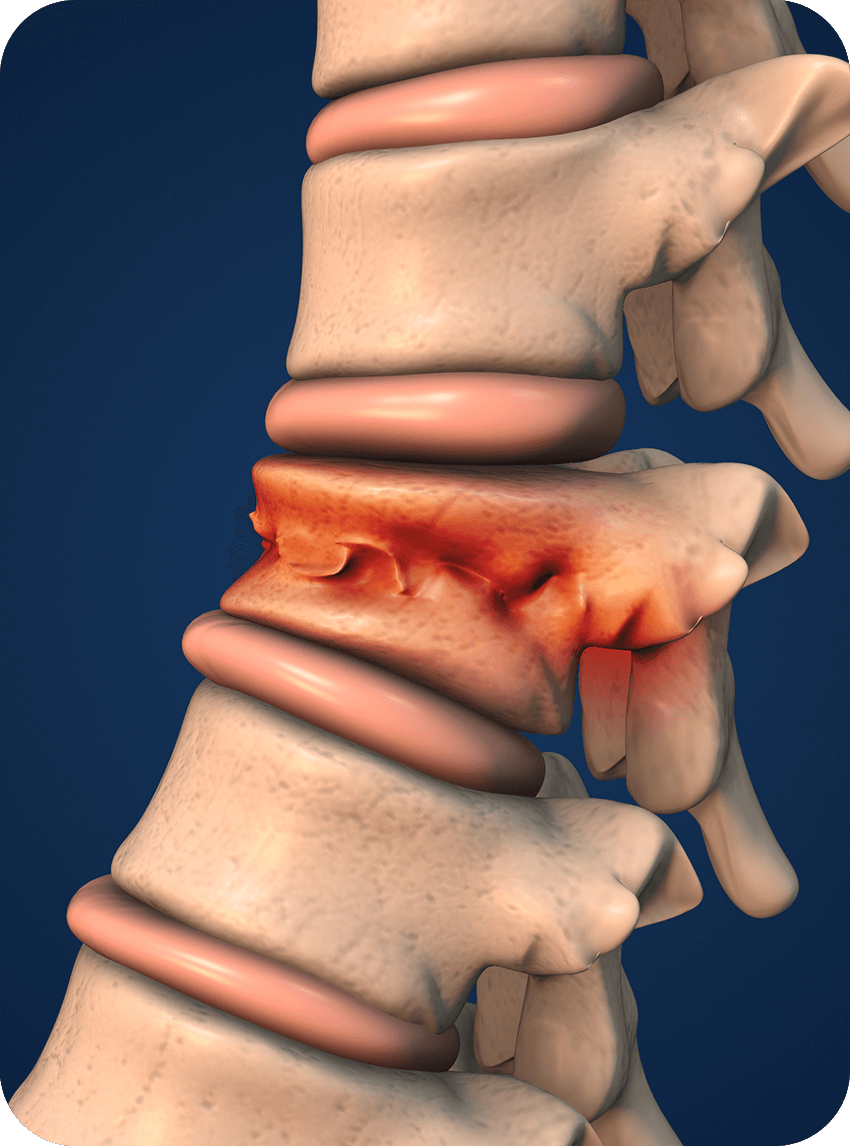Kyphoplasty & Vertebroplasty
Both procedures involve the injection of a medical-grade bone cement into the fractured vertebra to stabilize it and relieve pain.
-
Vertebroplasty: A small needle is guided into the fractured vertebra, and bone cement is injected to harden and stabilize the bone.
-
Kyphoplasty: A balloon is first inserted into the vertebra and gently inflated to restore height before cement is injected, helping correct deformity and reduce curvature.
While similar in purpose, kyphoplasty may be preferred when restoring spinal alignment is important, while vertebroplasty is typically used for straightforward stabilization.
Kyphoplasty and Vertebroplasty are performed to:
-
Relieve severe back pain caused by compression fractures
-
Stabilize weakened vertebrae and prevent further collapse
-
Improve mobility and posture
-
Reduce reliance on pain medications
-
Restore spinal alignment in some cases (kyphoplasty)
They are typically considered when:
-
Pain is severe and persistent despite medications or bracing
-
Imaging confirms one or more vertebral compression fractures
-
The patient’s quality of life is significantly impaired
- Performed as an outpatient or short-stay procedure
-
A needle is guided into the fractured vertebra using X-ray (fluoroscopy)
-
For vertebroplasty, bone cement is injected directly into the vertebra
-
For kyphoplasty, a balloon is first inflated to create space and restore height before cement injection
-
The cement hardens quickly, stabilizing the fracture
-
Most patients notice pain relief within 24–48 hours
- Rapid pain relief in most patients
-
Minimally invasive with small incisions
-
Short recovery time compared to open surgery
-
Reduced need for strong pain medications
-
Improved mobility and ability to perform daily activities
-
In kyphoplasty, possible restoration of vertebral height and improved spinal alignment
Fractures caused by tumors spreading to the spine (metastatic disease) or multiple myeloma.
Fractures resulting from falls, accidents, or injuries in patients with weakened bones.
Spinal curvature or hunched posture resulting from collapsed vertebrae, which may be partially corrected with kyphoplasty.

